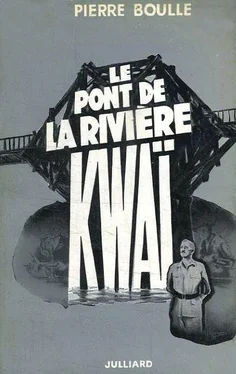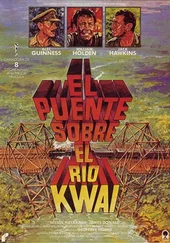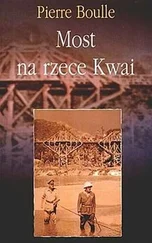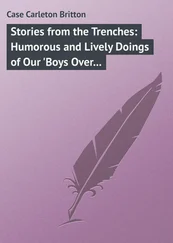From that moment he did not allow himself a minute’s leisure. He started by dashing off a sketch of the bridge, as he saw it in his mind’s eye whenever he looked at the river, with its four majestic rows of piles meticulously in line, its bold but graceful superstructure towering a hundred feet above the water, its beams assembled according to a process he had himself invented and which he had tried in vain to make the conservative Government of India adopt years ago, its broad platform protected by a strong balustrade, allowing room not only for the railway itself but also for a vehicle track and footpath.
After that he set to work on the calculations and diagrams, and then on the actual design. He had managed to acquire a roll of fairly decent drawing paper from his Japanese’s colleague, who kept sidling up behind him to gaze at the work in progress with ill-concealed, bewildered admiration.
He fell into the habit of working like this from dawn till dusk, without a moment’s rest, until he noticed that the hours of daylight were over all too soon, until he realized with dismay that the days were all too short and that his task would never be finished in the time he had allowed. And so, using Colonel Nicholson as his intermediary, he got permission from Saito to keep a lamp burning after Lights Out. From that day on, he spent every evening and sometimes half the night working on the design of the bridge. Sitting on a rickety footstool, using his wretched bamboo bed as a desk, with his drawing paper spread out on a board which he had himself planed smooth with loving care, in the light of the tiny oil lamp which filled the hut with fetid fumes, he would handle with expert ease the T square which he had taken such pains to make.
The only time these instruments were out of his fingers was when he seized a fresh sheet of paper and feverishly filled it with further calculations, sacrificing his sleep at the end of each tiring day in order to see his craftsmanship take shape in a masterpiece which was to prove the superiority of the West—this bridge, which was to be used by the Japanese trains on their triumphant advance to the Bay of Bengal.
Clipton had at first believed that the preliminary stages in the Western modus operandi (the elaborate administrative plans, followed by painstaking research and mechanical tests) would retard the actual building of the bridge even more than the haphazard empiricism of the Japanese. It was not long before he realized how vain these hopes of his were and how wrong he had been to jeer at all the preparatory work undertaken during the long sleepless nights caused by Reeves’s lamp. He began to understand that he had been a little too hasty in his criticism of the methods of Western civilization on the day that Reeves submitted his finished plan to Major Hughes and the construction got under way with a speed surpassing even Saito’s most optimistic dreams.
Reeves was not one of those people who become mesmerized by symbolic preparations or who postpone taking action indefinitely because they devote all their energies to intellectual activity and think nothing of the practical side. He kept one foot firmly on the ground. Besides, whenever he showed signs of pursuing theoretical perfection too closely and shrouding the bridge in a fog of abstract figures, Colonel Nicholson was there to guide his erring footsteps. The Colonel had the practical sense of a born leader, who never loses sight of his objective or the means at his disposal and who keeps his subordinates perfectly balanced between idealism and reality.
He had consented to the preliminary tests on condition that they were quickly completed. He had also approved the blueprint and been given a detailed explanation of the innovations due to Reeves’s inventive genius. All he had asked was that the latter should not overwork himself.
“We’ll be getting along nicely, and then suddenly you’ll get sick, Reeves. The whole job depends on you, remember.”
So he began to watch Reeves carefully, and appealed to common sense when Reeves came to him one day with a worried look in his eye to inform him of certain particulars.
“There’s one point that’s bothering me, sir. I don’t think we should treat it too seriously, but I wanted to know what you felt about it.”
“What is it, Reeves?” the Colonel asked,
“The wood’s still damp, sir. We shouldn’t be using freshly felled trees on a job like this. They should first be left out in the open to dry.”
“How long would it take for these trees of yours to dry, Reeves?”
“It all depends on what sort of wood it is, sir. With some kinds it’s advisable to wait eighteen months or even a couple of years.”
“That’s absolutely out of the question, Reeves,” the Colonel protested. “We’ve only got five months as it is.”
The Captain hung his head apologetically.
“I realize that, sir, and that’s exactly what’s worrying me.”
“And what’s wrong with using fresh timber?”
“Some species contract, sir, and that might cause cracks and displacements once the work is under way. Not with every kind of wood, of course. Elm, for instance, hardly shifts at all. So naturally I’ve selected timber which is as much like elm as possible. The elm piles of London Bridge have lasted six hundred years, sir.”
“Six hundred years!” exclaimed the Colonel. There was a glint in his eye as he involuntarily turned toward the river. “Six hundred years, Reeves—that would be a pretty good show!”
“Oh, but that’s an exceptional case, sir. You could hardly count on more than fifty or sixty years in this place. Less, perhaps, if the timber dries out badly.”
“We’ll just have to take that chance, Reeves,” the Colonel firmly decided. “You must use fresh timber. We can’t achieve the impossible. If they blame us for any fault in the construction, at least we’ll be able to tell them that it couldn’t be avoided.”
“Right, sir. Just another question. Creosote, for protecting the beams against insect damage … I think we’ll have to do without it, sir. The Japs haven’t got any. Of course, we could make a substitute … I’d thought of setting up a wood-alcohol still. That might do, but it would take some time… No, on second thought, I don’t think we’d better…”
“Why not, Reeves?” asked the Colonel, who was fascinated by all these technical details.
“Well, there’s a difference of opinion on this, sir; but the best authorities advise against creosoting when the timber’s not sufficiently dry. It keeps the sap and the damp in, sir; and then there’s a risk of rot setting in at once.”
“In that case we’ll have to do without creosote, Reeves. You must bear in mind that we can’t afford to embark on any scheme beyond our means. Don’t forget, the bridge has an immediate role to fulfill.”
“Apart from those two snags, sir, I’m quite certain we can build a bridge here which will be perfectly all right from the technical point of view and reasonably strong.”
“That’s it, Reeves. You’re on the right track. A reasonably strong bridge which is all right from the technical point of view. A bridge, in fact, and not a Heath Robinson contraption. That’s what we want. As I’ve said before, I’m relying on you entirely.”
Colonel Nicholson left his technical adviser, feeling pleased with the simple phrase he had coined to define his objective.
Shears—or “Number One,” as he was called by the Siamese partisans in the remote hamlet where the envoys of Force 316 were now in hiding—was likewise the sort of man who devotes a great deal of thought and care to systematic preparation. In fact, the high regard in which he was held at headquarters was as much due to the caution and patience he showed before taking any action as to his cheerfulness and determination when the time for action arrived. Warden, Professor Warden, his second- in-command, also had a well-earned reputation for leaving nothing to chance unless circumstances dictated otherwise. As for Joyce, the third and youngest member of the team, who was still fresh from his course at the Plastic and Destructions Company’s special school in Calcutta, he seemed to have his head screwed on the right way in spite of his youth, and Shears valued his opinion. And so, during the daily conferences held in the two-room native hut which had been put at their disposal, any promising idea was carefully considered and every suggestion thoroughly examined.
Читать дальше











